Yes, it matters if your home’s crawl space vents are open or closed. While many homeowners believe open vents help prevent moisture from accumulating in their crawlspace, evidence suggests otherwise. Today, the consensus is that sealing crawl space vents is better than leaving them open.
In this article, we’ll review how moisture enters a crawl space, why it’s better to seal crawl space vents, the most effective way to get a clean, dry crawl space, and more.
What Is a Crawl Space?
In a crawl space foundation, a crawl space is the area under the house that’s usually 1-3 feet high, or just enough room to crawl around (hence the name “crawl space”). The crawl space provides easy access to the home’s plumbing and electrical wiring, which can reduce the cost of repairs and maintenance. An encapsulated crawl space can even be used to store things like tools and holiday decorations. Crawl spaces are usually accessed via a small door on the outside of the house or through a small opening inside a closet.
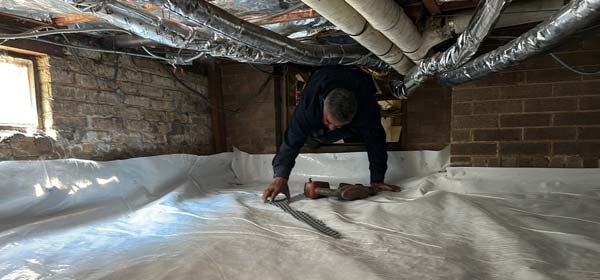
Crawl spaces are convenient, but can also be damp and prone to mold growth, water damage, and pest infestations if they aren’t properly maintained. Proper maintenance might include encapsulating the crawl space (more about encapsulation below) and installing a drain tile system around the foundation.
What Are Crawl Space Vents?
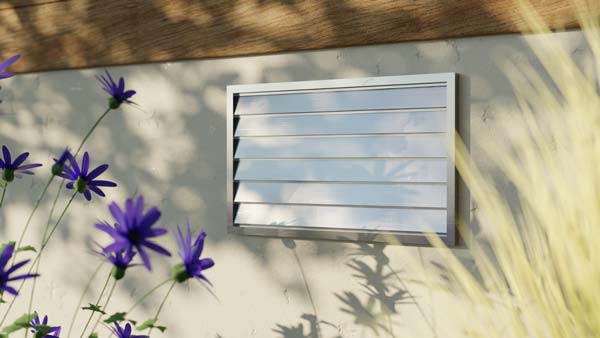
Crawl space vents are small openings in the foundation wall that are designed to allow outside air into and out of the crawl space. The original idea behind crawl space vents was that allowing air to flow into the crawl space would prevent moisture buildup, mold growth, wood rot, pest infestations, and structural damage. However, recent studies suggest that crawl space vents can actually lead to increased moisture buildup. For this reason, many builders and homeowners are turning to encapsulation and dehumidification.
How Moisture Gets into a Crawl Space
There are various ways that moisture can get into a crawl space, including:
- Open vents – When warm, humid air enters into the crawl space through open vents, it condenses on cooler surfaces, producing moisture.
- Surface water – Heavy rain or flooding can cause water to accumulate in the soil around the foundation, seeping into the crawl space through cracks and gaps. Clogged gutters and downspouts that are too short can also cause moisture to build up in the ground around the foundation.
- Drainage issues – Poor drainage around the home’s perimeter can contribute to water pooling around the foundation and then seeping into the crawl space.
- Plumbing leaks – Leakage from water lines and drain pipes can often go unnoticed for a while, resulting in dampness and water accumulation in the crawl space.
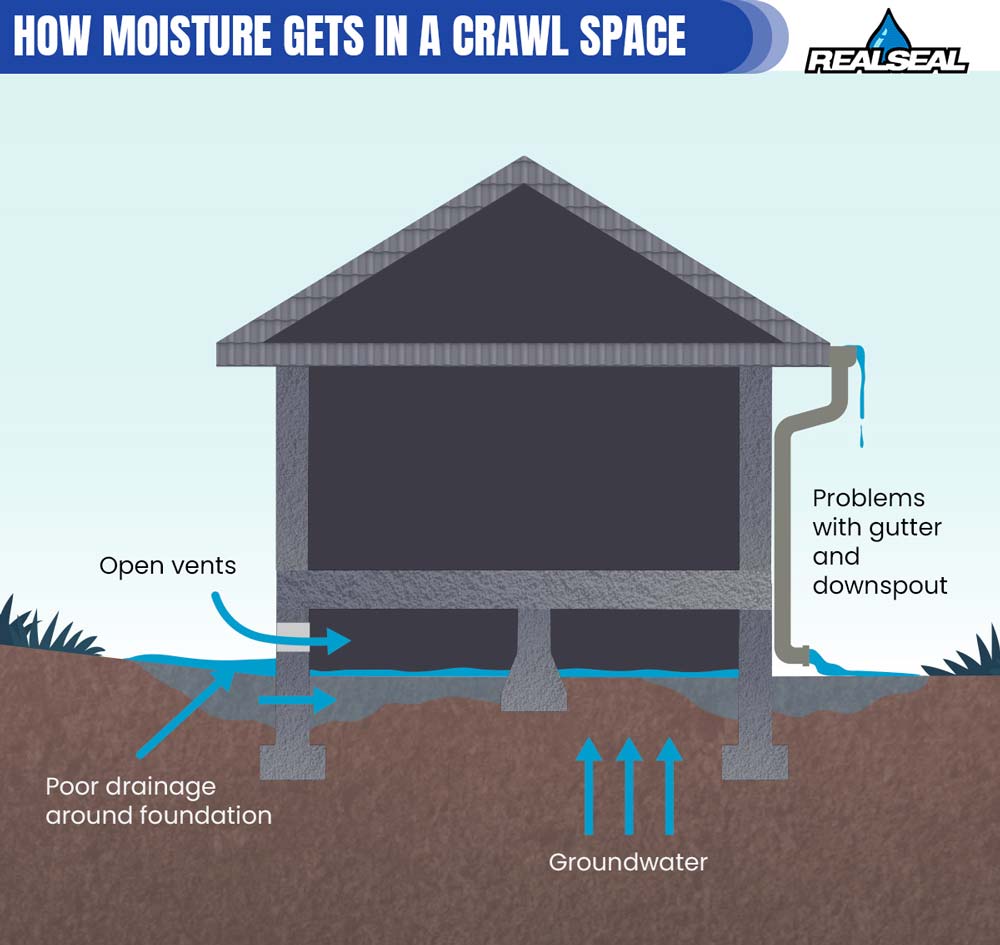
Moisture in a crawl space can result in wood rot, mold growth, and other issues that can not only degrade the crawl space’s structural integrity, but also reduce indoor air quality inside the home. If your crawl space is full of mold, then the air flowing from the crawl space into your living area will likely contain mold spores.
Does It Matter If Crawl Space Vents Are Open or Closed?
Yes, it absolutely matters. As noted above, open crawl space vents offer an easy way for moisture to accumulate inside. When warm, moist air from the outside enters into the cool crawl space, it condenses on pipes, insulation, and other surfaces, leading to mold growth and wood rot.
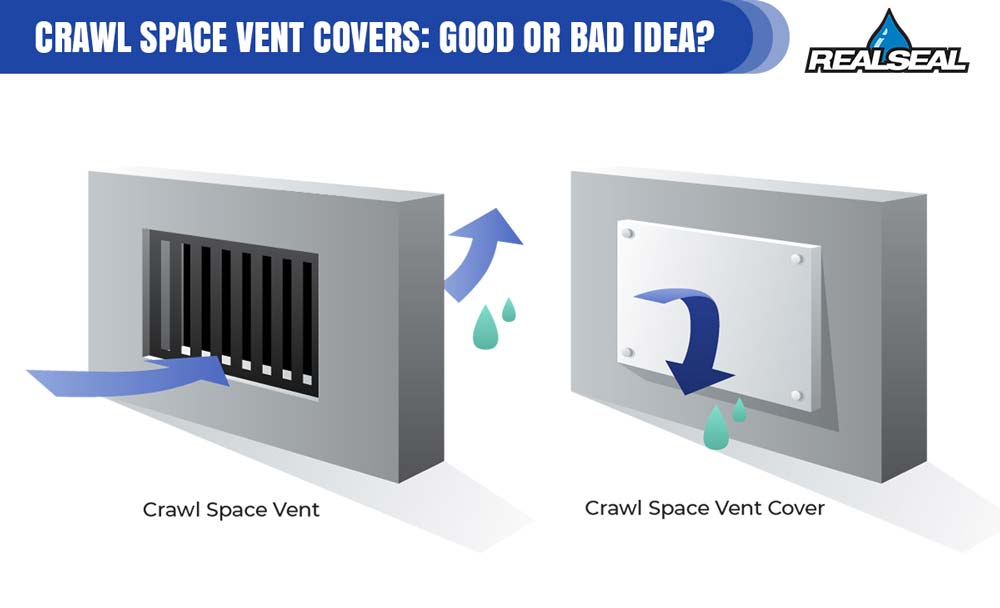
The recommended practice now is to seal crawl space vents and use alternative ventilation methods (for example: a dehumidifier). This can help maintain a consistent humidity level in the crawl space, preventing moisture buildup and improving indoor air quality.
Sealed crawl spaces are also more energy-efficient, as they prevent air leaks, reducing the load on heating and cooling systems. They also provide better protection against pests and critters that can make their way into the crawl space through open vents.
Two Steps to a Clean, Dry Crawl Space
Installing a drain tile system and encapsulating the crawl space is the optimal solution for achieving a clean, dry crawl space.
1. Drain Tile System
A drain tile system is a very effective way to ensure that the ground around the foundation stays dry. Excess soil moisture flows into a buried, perforated drainage pipe and away from the foundation. For more information, see our article How A Drain Tile System Can Save You Money.
2. Encapsulation
Encapsulating the crawl space involves sealing the vents and covering the floor and walls of the crawl space with a thick, vapor-retarding barrier. This prevents moisture and humidity from entering the area, improving indoor air quality and energy efficiency. An encapsulated crawl space can also be used for storage. For more information, see our article Is Crawl Space Encapsulation Worth It? YES!
Other Things You Can Do That Will Help Keep Your Crawl Space Dry
The good news is that there are several other preventative measures you can take to help keep your crawl space dry. These include the following:
- If necessary, regrade your yard – This means ensuring that the yard slopes away from the house and there are no low spots where water can accumulate. When water collects around the foundation, it can seep into the crawl space.
- Use downspout extensions – Downspout extensions carry rainwater further away from the foundation before release to prevent it from pooling around the house. Downspout extensions are inexpensive and easy to install.
- Clean gutters regularly – Clogged gutters can cause water to overflow, run down the side of the house, and soak into the ground around the foundation.
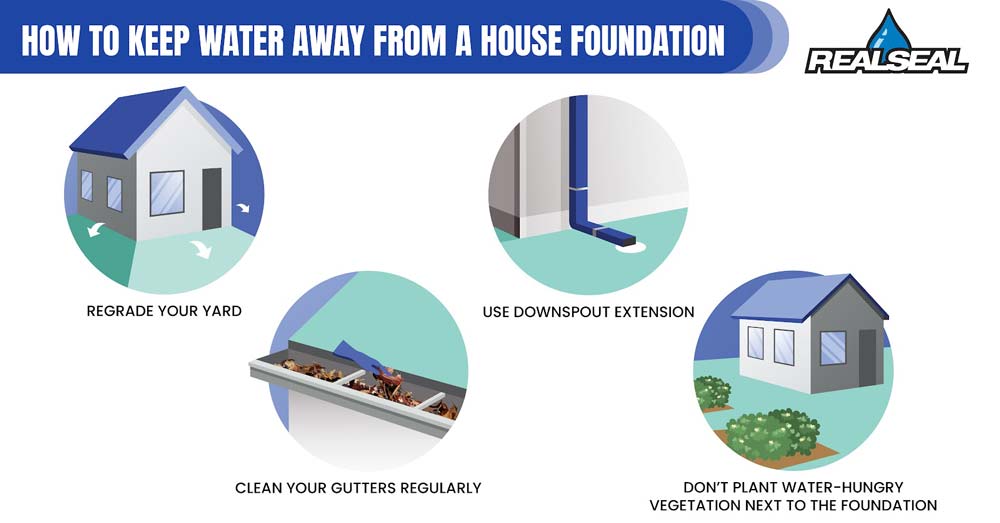
If you’re in Chicagoland and concerned about the health of your home’s crawl space, contact The Real Seal today to schedule a crawl space evaluation.
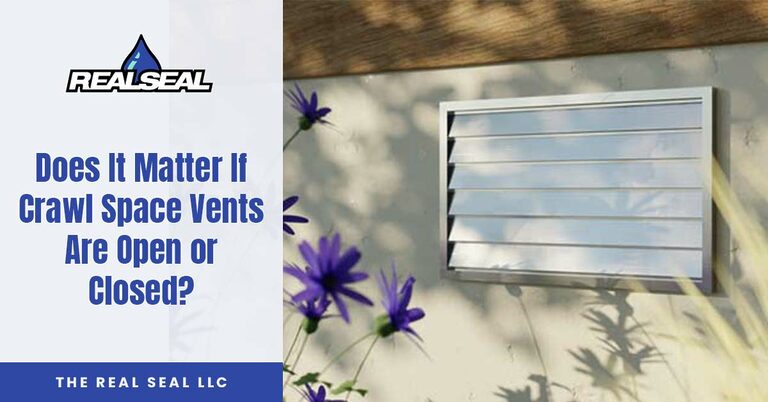
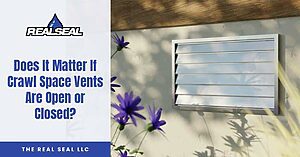





2 Responses
Do you have people in the Cleveland Ohio area.
Hi Thomas,
Unfortunately we are not in the Cleveland area. We would recommend comparing and reading reviews across Yelp, Angie’s, BBB, and Google to find the most reputable contractor in your area.